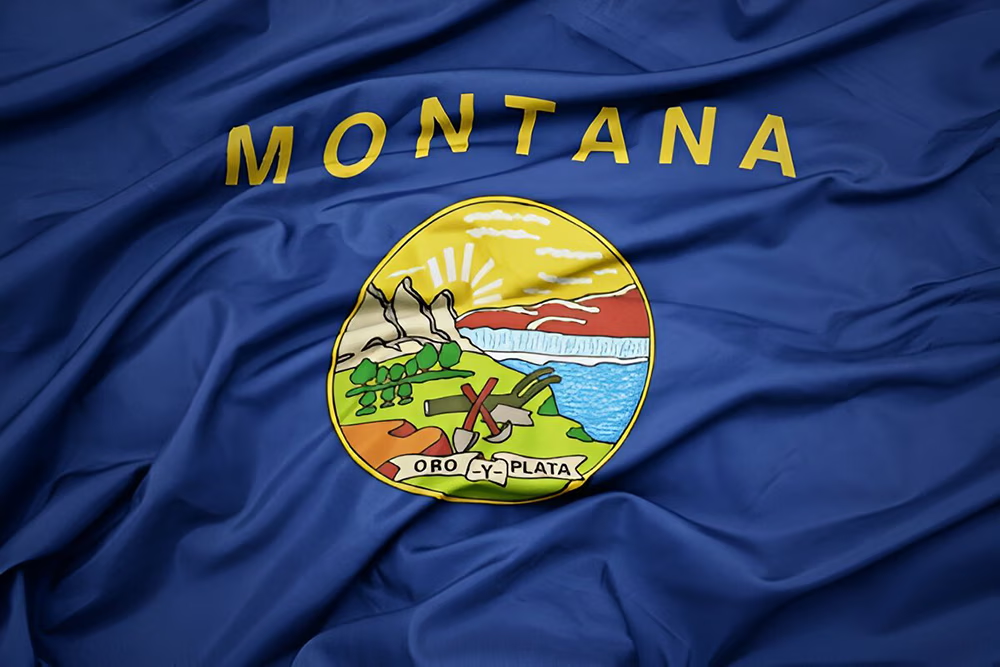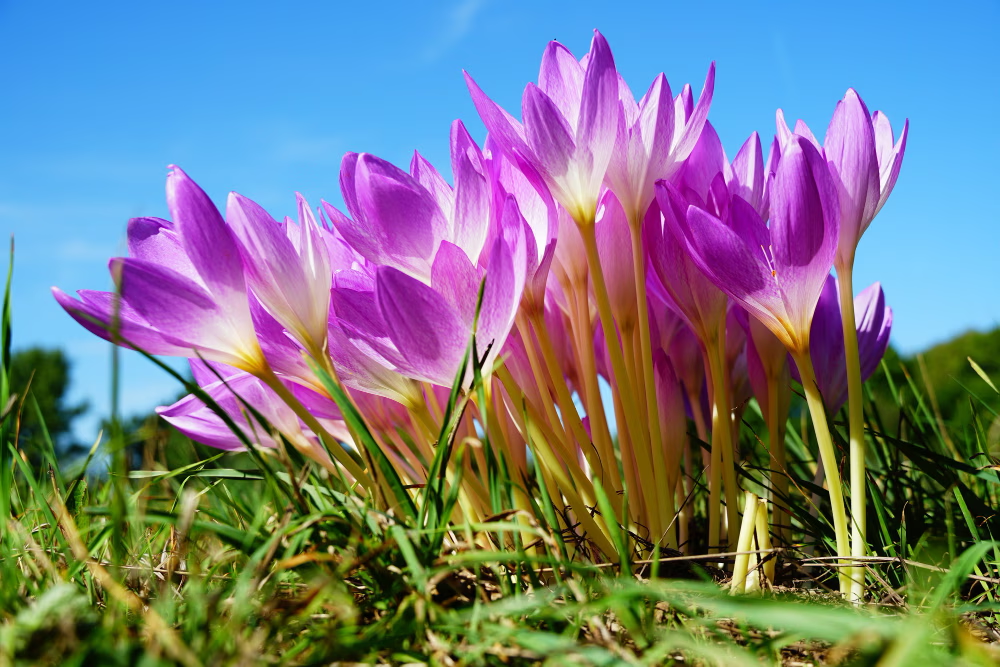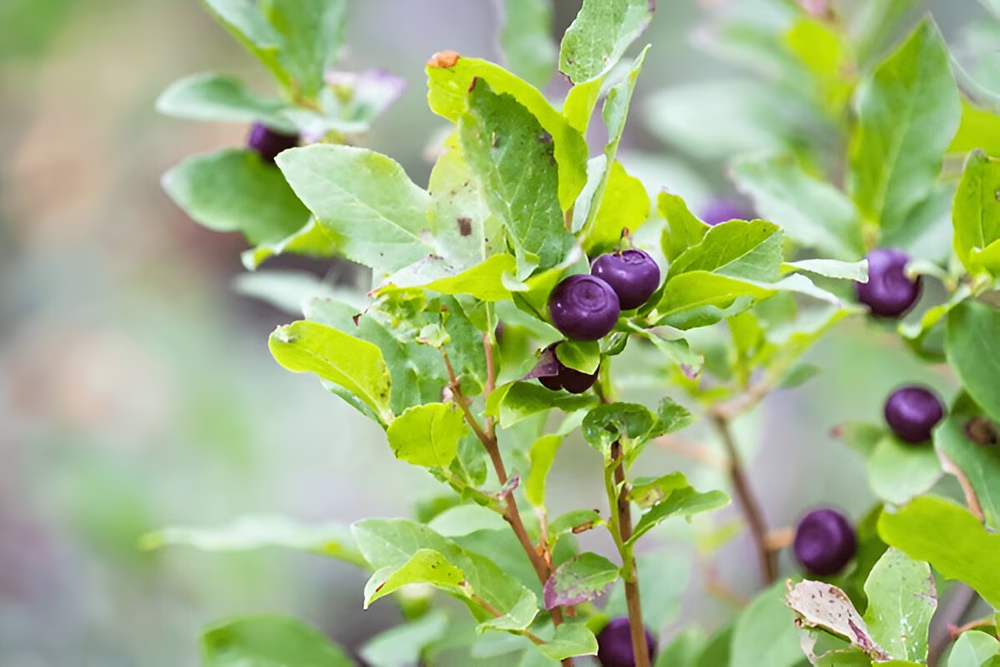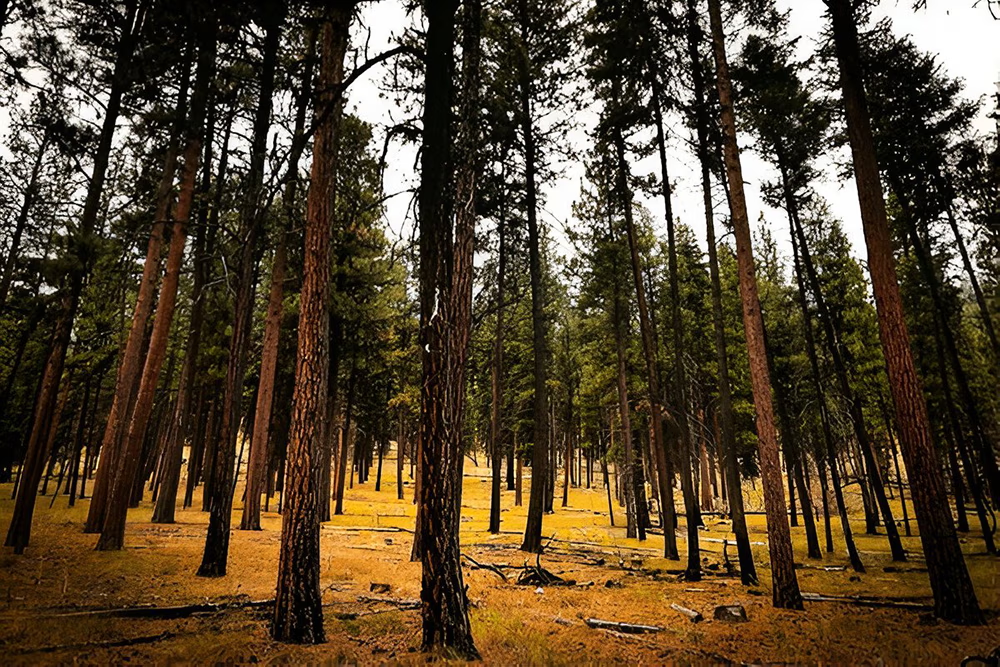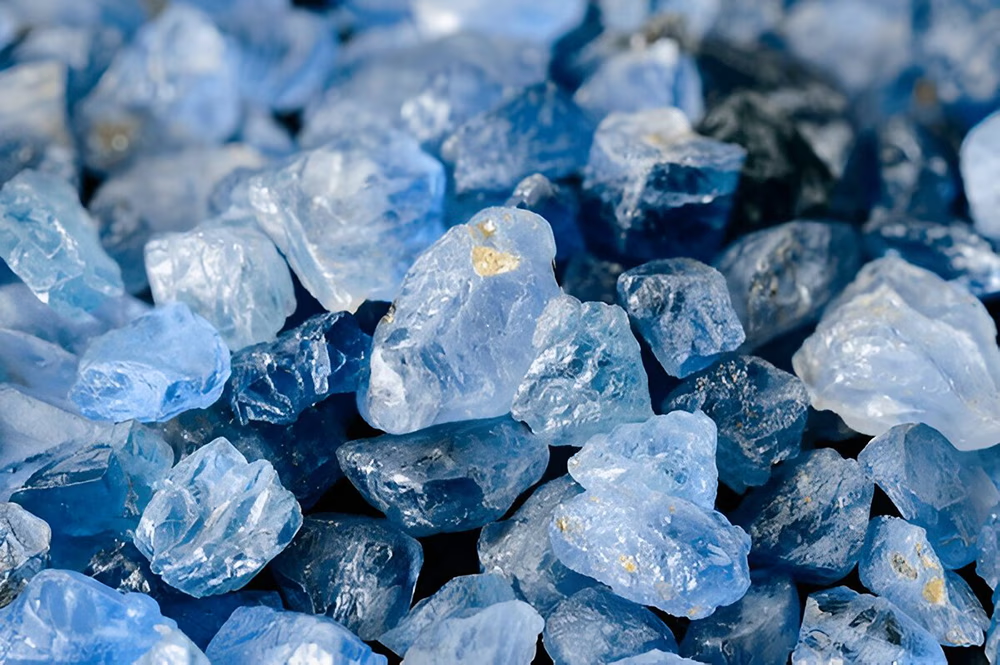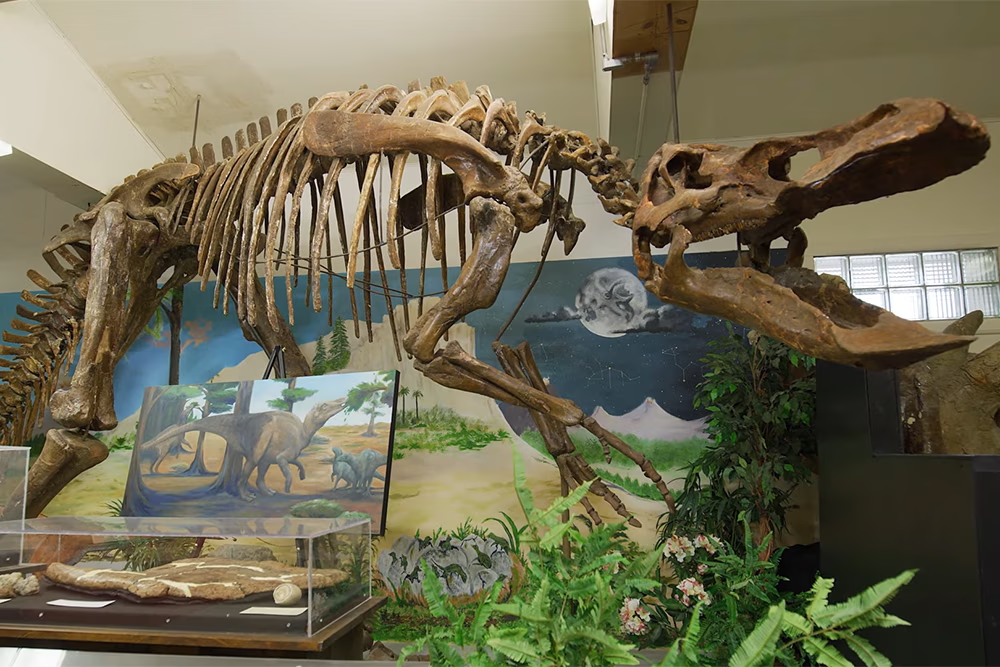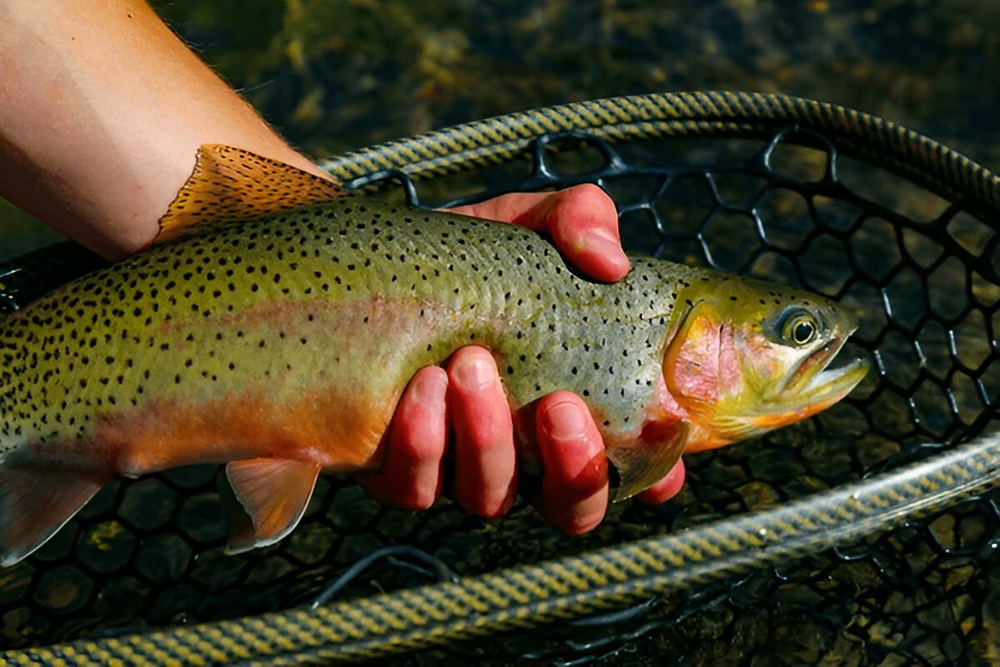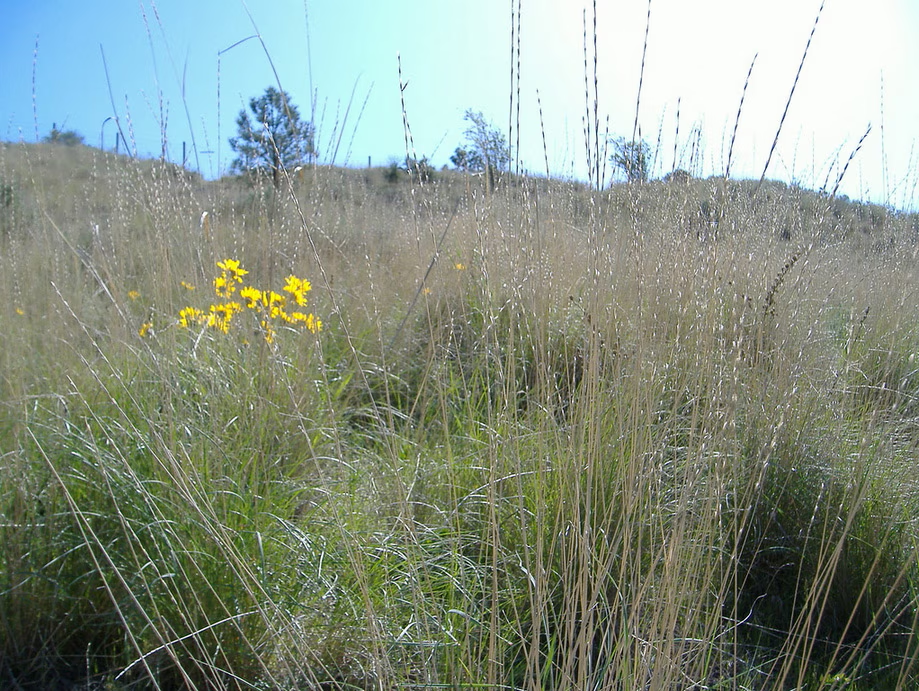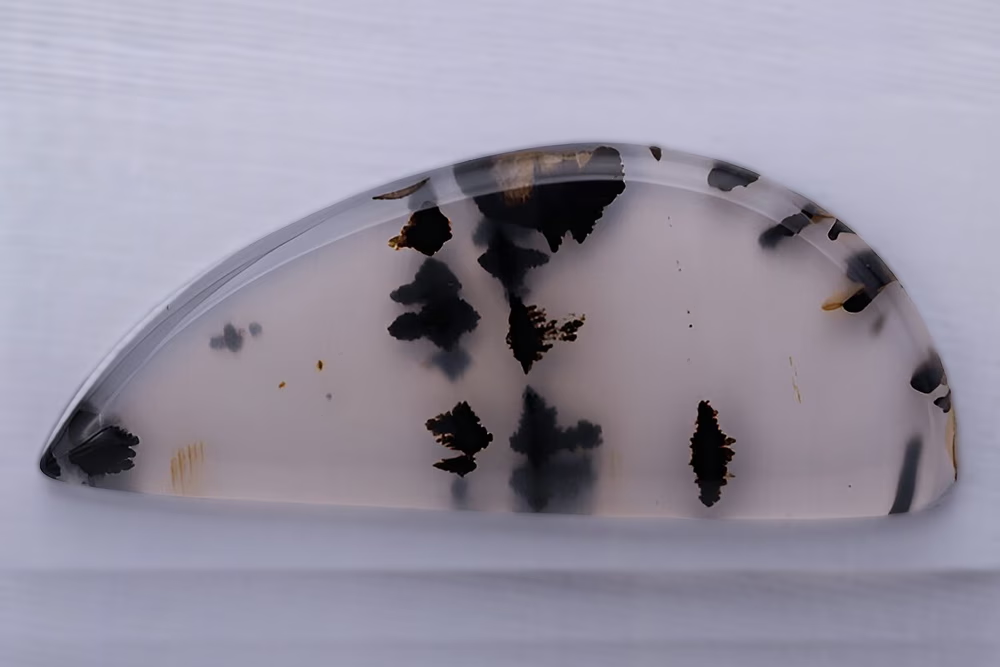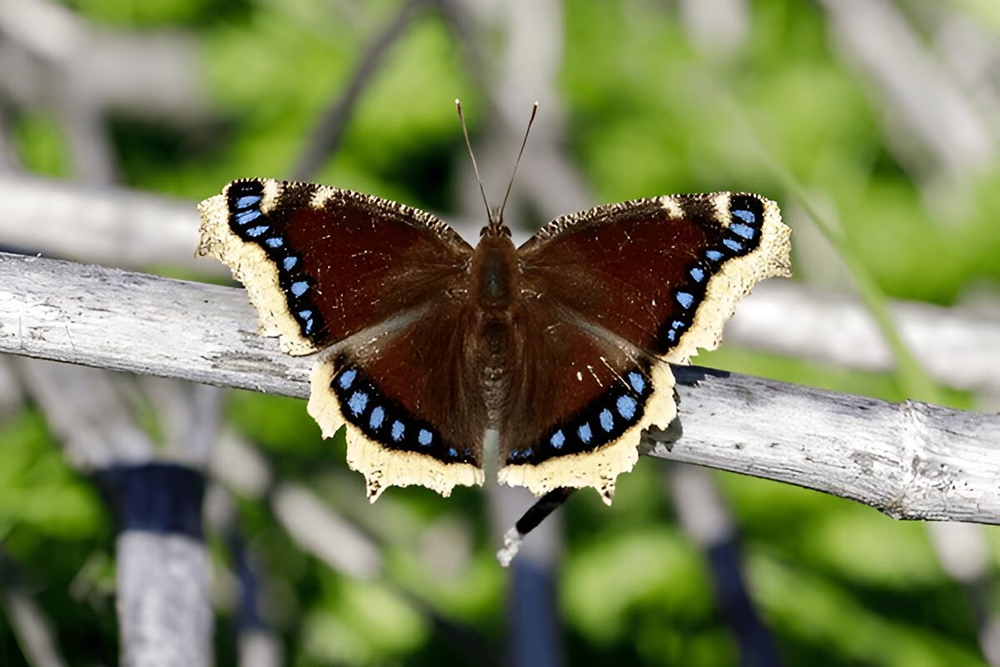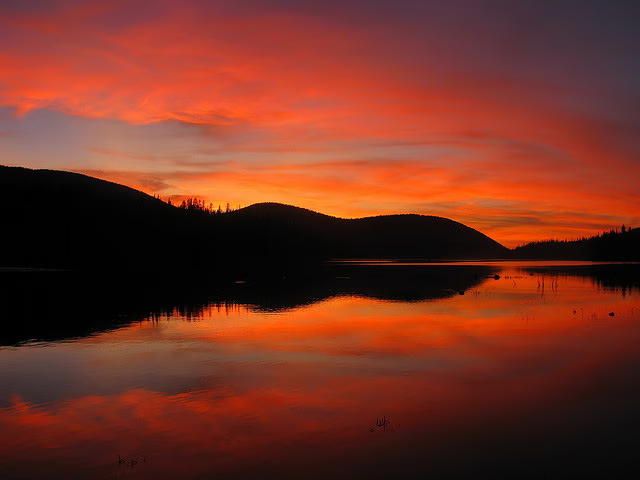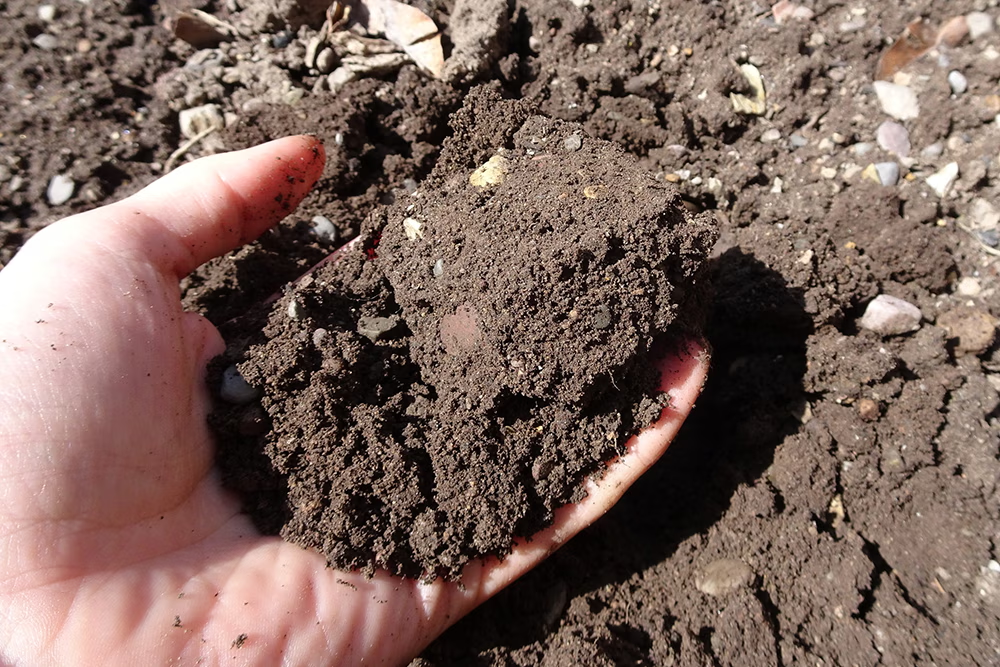Montana, known as the Treasure State, boasts a rich tapestry of natural wonders, cultural heritage, and historical significance. At the heart of this identity lie the state symbols, carefully chosen representations that embody the essence of Montana’s unique character. These symbols serve as powerful ambassadors, telling the story of the state’s diverse landscapes, wildlife, and traditions.
State symbols are more than mere decorative elements; they are carefully selected emblems that reflect the values, history, and natural beauty of a region. For Montana, these symbols range from the majestic grizzly bear to the delicate bitterroot flower, each carrying its own significance and contributing to the state’s collective identity.
The importance of these symbols extends beyond state pride. They play a crucial role in education, helping students connect with their state’s heritage and natural environment. Moreover, these symbols serve as powerful tools for tourism, attracting visitors eager to experience the unique flora, fauna, and geological wonders that Montana has to offer.
As we delve into the 17 state symbols of Montana, we’ll uncover the stories behind their selection and the profound impact they have on shaping the state’s image. From the rugged peaks of the Rocky Mountains to the vast prairies of the eastern plains, these symbols encapsulate the diverse beauty and rich history that make Montana truly one of a kind. Join us on this journey through the emblems that define the Treasure State and discover why they hold such importance in the hearts of Montanans and admirers alike.
Table of Contents
Montana State Symbols
1. The State Flag: A Symbol of Montana’s Heritage
Montana’s state flag is a vibrant representation of the state’s rich history and natural beauty. Adopted in 1905 and slightly modified in 1981, the flag features a deep blue background that serves as a canvas for the state’s iconic seal. At the center of the flag, the seal showcases Montana’s breathtaking landscapes and diverse resources.
The seal depicts a plow, a pick, and a shovel in the foreground, symbolizing Montana’s agricultural roots and mining heritage. Behind these tools, the sun rises over majestic mountains, their peaks reaching towards a bright sky. The mountains represent the state’s rugged terrain and natural grandeur, while the rising sun signifies hope, opportunity, and the dawning of a new day.
Flowing through the scene is the Missouri River, one of Montana’s vital waterways, emphasizing the importance of water resources to the state. The river’s presence also alludes to the Lewis and Clark expedition, which played a crucial role in exploring and mapping the region.
Encircling the seal is a gold banner bearing the state’s name, “MONTANA,” in bold letters. Below the seal, another banner proudly displays the state motto, “Oro y Plata,” which means “Gold and Silver” in Spanish. This motto pays homage to Montana’s mining history and the wealth of precious metals found within its borders.
The flag’s design not only captures the essence of Montana’s landscape but also tells the story of its people – hardworking, resourceful, and deeply connected to the land. It serves as a powerful symbol of state pride, reminding Montanans of their heritage and the natural wonders that surround them. Whether flying over government buildings, schools, or homes, the Montana state flag stands as a testament to the state’s enduring spirit and the beauty that has earned it the nickname “The Treasure State.
2. Montana State Seal: A Representation of the State’s Heritage and Resources
The Montana State Seal, a central element of the state flag, encapsulates the rich history, diverse landscapes, and abundant resources that define the Treasure State. Adopted in 1865, the seal serves as a powerful visual representation of Montana’s identity.
At the heart of the seal, a plow, pick, and shovel take center stage, symbolizing Montana’s strong agricultural roots and mining heritage. These tools represent the hardworking spirit of Montanans and the industries that have shaped the state’s economy for generations.
Rising behind the tools, the sun emerges over a series of majestic mountain peaks, showcasing Montana’s rugged terrain and natural beauty. The mountains, likely inspired by the iconic Rocky Mountains, highlight the state’s diverse geography and the grandeur of its landscapes.
Flowing through the scene is the mighty Missouri River, one of Montana’s most significant waterways. The river’s presence in the seal emphasizes the importance of water resources to the state and alludes to the historic Lewis and Clark expedition, which played a pivotal role in the exploration and mapping of the region.
Encircling the central imagery are two banners. The upper banner proudly displays the state’s name, “MONTANA,” in bold letters, while the lower banner features the state motto, “Oro y Plata,” which translates to “Gold and Silver” in Spanish. This motto pays tribute to Montana’s mining history and the wealth of precious metals that have contributed to the state’s development.
The Montana State Seal not only showcases the state’s physical attributes but also tells the story of its people and their deep connection to the land. It serves as a reminder of Montana’s heritage, the industries that have shaped its growth, and the natural wonders that continue to inspire and attract people from around the world. As a prominent feature of the state flag and other official emblems, the seal is a powerful symbol of Montana’s identity and the pride its residents have in their unique and beautiful state.
3. Montana State Motto: “Oro y Plata” – A Nod to the State’s Mining Heritage
Montana’s state motto, “Oro y Plata,” which translates to “Gold and Silver” in Spanish, is a testament to the state’s rich mining history and the role precious metals have played in shaping its economy and culture.
The motto was adopted in 1865, just a few years after the discovery of gold in Montana’s western region. This discovery sparked a massive influx of prospectors and settlers, all hoping to strike it rich in the newly established Montana Territory. The gold rush of the 1860s brought thousands of people to the area, leading to the rapid growth of mining camps and the establishment of new towns and cities.
As the gold rush began to wane, silver deposits were discovered in Montana, leading to a new wave of mining activity. The town of Butte, in particular, became known as “the Richest Hill on Earth” due to its vast silver reserves. The silver boom of the late 19th century further solidified Montana’s reputation as a mining powerhouse and contributed significantly to the state’s economic development.
The choice of a Spanish motto might seem unusual for a state in the northwestern United States, but it is believed to be a nod to the influence of Spanish-speaking miners who were among the early prospectors in Montana. The motto also reflects the international appeal of Montana’s mineral wealth, which attracted people from all over the world.
Today, while mining is no longer the dominant industry in Montana, the state motto serves as a reminder of the crucial role that gold and silver played in the state’s early history. It is a celebration of the pioneering spirit, hard work, and determination that characterized the miners and settlers who helped build Montana into the state it is today.
The motto “Oro y Plata” is proudly displayed on the Montana State Seal, which is featured prominently on the state flag. This inclusion ensures that the state’s mining heritage is always remembered and honored as an integral part of Montana’s identity.
4. Montana State Nickname: Treasure State
Montana’s nickname, “Treasure State,” is a fitting tribute to the vast array of natural resources and breathtaking landscapes that make this state so special. The nickname has its roots in Montana’s mining history, as the state’s gold and silver deposits were once considered a treasure trove for prospectors and miners. However, over time, the meaning of “Treasure State” has expanded to encompass the many other riches that Montana has to offer.
One of Montana’s most precious treasures is its stunning natural beauty. From the rugged peaks of the Rocky Mountains to the pristine waters of Glacier National Park, Montana is home to some of the most awe-inspiring landscapes in the United States. The state’s wide-open spaces, lush forests, and crystal-clear rivers and streams are a true treasure for outdoor enthusiasts, offering endless opportunities for hiking, fishing, camping, and other recreational activities.
Another aspect of Montana’s treasures lies in its abundant wildlife. The state is home to an incredible diversity of species, including bison, elk, grizzly bears, and bald eagles. Yellowstone National Park, which is partially located in Montana, is renowned for its thriving ecosystem and is considered one of the greatest wildlife treasures in North America.
Montana’s agricultural resources are yet another facet of its status as the Treasure State. With vast expanses of fertile land, Montana is a major producer of wheat, barley, and other crops. The state’s ranching industry is also significant, with cattle and sheep grazing on the rolling hills and grasslands. These agricultural treasures not only contribute to Montana’s economy but also help to shape its rural character and way of life.
In addition to its natural and agricultural wealth, Montana is also treasured for its vibrant communities, rich cultural heritage, and friendly, hardworking people. From the bustling cities of Billings and Missoula to the charming small towns scattered throughout the state, Montana’s communities are a treasure in their own right, each with its own unique character and sense of place.
The nickname “Treasure State” is a source of pride for Montanans, who recognize and cherish the many blessings their state has to offer. It is a reminder of the state’s rich history, its abundant resources, and the countless treasures that make Montana such a special place to live, work, and visit.
5. Montana State Song: Montana – A Musical Tribute to the State’s Beauty and Spirit
The official state song of Montana, simply titled “Montana,” is a musical celebration of the state’s natural beauty, rich history, and the enduring spirit of its people. The song was composed by Charles C. Cohan, a former Montana State Representative, and was adopted as the official state song in 1945.
Rather than quoting the lyrics directly, which could potentially infringe on copyright, it is better to discuss the general themes and sentiments expressed in the song. “Montana” pays tribute to the state’s majestic mountains, rolling plains, and big sky, painting a vivid picture of the landscape that has captivated the hearts of so many. The song also honors the pioneering spirit of the men and women who settled in Montana, acknowledging their hard work, determination, and resilience in the face of adversity.
Throughout the song, there is a strong sense of pride and affection for Montana, with the lyrics expressing a deep emotional connection to the land and its people. The song’s melody is said to be stirring and memorable, reflecting the grandeur and beauty of the state itself.
The adoption of “Montana” as the official state song is a testament to the importance of music in capturing and expressing the essence of a place and its people. By enshrining this musical tribute in state law, Montana has recognized the power of song to unite, inspire, and celebrate the unique character and spirit of the Treasure State.
Today, “Montana” continues to be a beloved and iconic part of the state’s cultural heritage, often performed at official ceremonies, events, and celebrations. It serves as a reminder of the deep love and appreciation that Montanans have for their home, and the enduring beauty and majesty of the land that they are privileged to call their own.
6. The Grizzly Bear: Montana’s State Animal
The grizzly bear, officially designated as Montana’s state animal in 1983, is an iconic symbol of the state’s wild and rugged nature. These majestic creatures, scientifically known as Ursus arctos horribilis, are a subspecies of brown bear native to North America. Grizzlies are easily recognizable by their distinctive shoulder hump, dish-shaped face, and long claws.
Grizzly bears are impressive in size, with adult males weighing up to 700 pounds and standing up to 7 feet tall when on their hind legs. Their fur is typically brown, but can range from blonde to nearly black. Despite their intimidating appearance, grizzlies are omnivores, with a diet consisting of berries, roots, insects, fish, and occasionally larger mammals.
The importance of grizzly bears to Montana’s ecosystem cannot be overstated. As apex predators, they play a crucial role in maintaining the balance of wildlife populations. Their foraging habits help disperse seeds and nutrients across the landscape, contributing to the health and diversity of plant communities. Additionally, the presence of grizzlies is often considered an indicator of a healthy, intact ecosystem.
Conservation efforts for grizzly bears in Montana have been ongoing for decades. Once facing near-extinction in the lower 48 states, grizzly populations have slowly recovered thanks to protections under the Endangered Species Act and dedicated conservation programs. These efforts include habitat preservation, public education on bear safety, and measures to reduce human-bear conflicts.
Despite progress, challenges remain. Habitat loss, climate change, and human encroachment continue to threaten grizzly populations. Montana’s wildlife management agencies work tirelessly to balance the needs of the bears with those of local communities, implementing strategies such as bear-proof garbage containers and educational outreach programs.
The grizzly bear’s status as Montana’s state animal serves as a powerful reminder of the state’s commitment to preserving its natural heritage. It symbolizes the wild spirit of Montana and the importance of coexisting with nature. As residents and visitors alike encounter reminders of this magnificent creature throughout the state, they are encouraged to reflect on the vital role these bears play in Montana’s unique ecosystem and the ongoing efforts required to ensure their survival for generations to come.
7. Bitterroot: The State Flower’s Role in Montana’s Culture
The bitterroot (Lewisia rediviva) is not just Montana’s state flower; it’s a living testament to the state’s rich cultural heritage and natural beauty. This small, delicate plant with its striking pink to lavender blossoms holds a special place in Montana’s heart and history.
The bitterroot is a low-growing perennial that thrives in the rocky, well-drained soils of Montana’s mountains and valleys. Its vibrant flowers, which bloom in late spring to early summer, stand in stark contrast to its humble appearance during the rest of the year. The plant’s most distinctive feature is its fleshy taproot, which has been a crucial resource for indigenous peoples for centuries.
For Native American tribes, particularly the Salish and Kootenai, the bitterroot was more than just a pretty flower—it was a vital food source and medicinal plant. The root, despite its bitter taste (hence the name), was harvested, peeled, and often dried for winter use. It provided essential nutrients and was believed to have various healing properties.
The bitterroot’s significance extends beyond its practical uses. It plays a central role in the creation stories and spiritual practices of several Montana tribes. The annual bitterroot harvest was a time of celebration and ceremony, marking the transition from winter to spring and reinforcing community bonds.
Today, while no longer a staple food source, the bitterroot continues to be culturally significant. It serves as a symbol of Montana’s diverse ecosystems and the resilience of its native plants and people. The flower’s image can be found on various state emblems and documents, reminding Montanans of their connection to the land and its history.
Conservation efforts are ongoing to protect the bitterroot and its habitats. As climate change and human development pose threats to native plant species, the bitterroot’s status as the state flower has helped raise awareness about the importance of preserving Montana’s unique flora.
The bitterroot’s journey from a crucial survival resource to a beloved state symbol reflects Montana’s own evolution. It stands as a beautiful reminder of the state’s natural wonders and the enduring legacy of its indigenous cultures, bridging past and present in the landscape of the Treasure State.
8. The Western Meadowlark: Montana’s Melodious State Bird
The Western Meadowlark, with its vibrant yellow breast adorned with a distinctive black V-shaped marking, has been Montana’s state bird since 1931. This charismatic songbird, scientifically known as Sturnella neglecta, is a beloved symbol of the state’s vast prairies and open landscapes.
Characteristics of the Western Meadowlark make it a standout among Montana’s avian residents. Slightly larger than a robin, this bird boasts a stout body, a long, pointed bill, and a relatively short tail. Its back is intricately patterned with brown, black, and buff streaks, providing excellent camouflage in grassy environments. However, it’s the bird’s melodious song that truly captures the hearts of Montanans – a series of clear, flute-like notes that resonate across the plains, especially during spring and early summer.
The Western Meadowlark’s habitat preferences align perfectly with Montana’s landscape. These birds thrive in open grasslands, prairies, meadows, and agricultural fields. They can be found from the eastern plains to the intermountain valleys of western Montana, adapting well to both native prairies and cultivated lands. During breeding season, males can often be spotted perched on fence posts or tall grass stems, proudly singing their territorial songs.
The importance of the Western Meadowlark to Montana’s prairies extends beyond its symbolic status. As insectivores, these birds play a crucial role in controlling pest populations, benefiting both natural ecosystems and agricultural lands. They feed on a variety of insects, including grasshoppers, beetles, and caterpillars, helping to maintain the delicate balance of prairie ecosystems.
Furthermore, the Western Meadowlark serves as an indicator species for the health of grassland habitats. Their presence and abundance can provide valuable insights into the condition of Montana’s prairies, making them important subjects for conservation research and environmental monitoring efforts.
The selection of the Western Meadowlark as Montana’s state bird reflects the state’s appreciation for its natural heritage and the importance of preserving its unique prairie ecosystems. This cheerful, melodious bird not only brightens the vast Montana landscape with its song but also embodies the spirit of the Big Sky Country – resilient, adaptable, and deeply connected to the land.
9. Montana State Fruit: Huckleberry – A Delightful Symbol of Montana’s Natural Abundance
The huckleberry, a small, round, and deliciously sweet berry, is the official state fruit of Montana. Native to the northwestern United States and western Canada, huckleberries have been an important part of Montana’s natural and cultural heritage for generations.
Huckleberries are typically found growing wild in the mountainous regions of Montana, particularly in the western part of the state. These hardy little berries thrive in the shade of coniferous forests, often flourishing in areas that have been recently burned by wildfires. The berries range in color from deep purple to dark red, depending on the species and stage of ripeness.
For centuries, Native American tribes in Montana have valued huckleberries as a staple food source and an important part of their traditional diets. They would often gather the berries in large quantities during the late summer and early fall, preserving them for use throughout the year. Huckleberries were also used for medicinal purposes, with some tribes believing that the berries had powerful healing properties.
As Montana became more settled by European Americans, huckleberries continued to be an important part of the state’s food culture. Pioneers and early settlers would often gather the berries and use them in a variety of dishes, from pies and jams to syrups and sauces. Today, huckleberries remain a beloved and iconic part of Montana’s culinary heritage, with huckleberry-flavored foods and products being popular among both locals and tourists.
In addition to their culinary value, huckleberries are also an important food source for many of Montana’s wildlife species. Bears, birds, and other animals rely on the berries as a critical source of nutrition, particularly in the late summer and early fall when they are preparing for hibernation or migration.
The designation of the huckleberry as Montana’s state fruit in 2007 was a recognition of the berry’s significance to the state’s natural and cultural heritage. It also serves as a reminder of the importance of preserving and protecting Montana’s wild spaces and the diverse array of plant and animal species that call these areas home.
Whether enjoyed fresh off the bush or incorporated into a delicious dish, the huckleberry is a true Montana treasure, a symbol of the state’s natural abundance, and a beloved part of its unique identity.
10. Ponderosa Pine: The State Tree’s Impact on Montana’s Landscape
The majestic Ponderosa Pine, designated as Montana’s state tree in 1949, stands as a testament to the rugged beauty and resilience of the Treasure State. This iconic conifer, scientifically known as Pinus ponderosa, is easily recognizable by its distinctive orange-brown bark that resembles puzzle pieces and its long needles that grow in clusters of two to three.
Towering up to 200 feet tall, the Ponderosa Pine dominates Montana’s lower elevation forests, creating a stunning visual tapestry across the state’s diverse landscape. Its thick, fire-resistant bark allows it to withstand the frequent wildfires that are an integral part of Montana’s forest ecology, making it a crucial species for forest regeneration and habitat stability.
Ecologically, the Ponderosa Pine plays a vital role in Montana’s ecosystems. Its expansive root system helps prevent soil erosion, particularly on steep mountain slopes, while also contributing to water retention in the state’s often arid climate. The tree provides essential habitat and food for a wide array of wildlife, including birds like the white-headed woodpecker and mammals such as squirrels and bears.
Beyond its ecological importance, the Ponderosa Pine holds significant economic value for Montana. As a primary timber species, it supports the state’s forestry industry, providing jobs and revenue through sustainable logging practices. The wood, known for its strength and versatility, is used in construction, furniture making, and even as a source of pulp for paper production.
Moreover, the Ponderosa Pine forests of Montana contribute to the state’s thriving tourism industry. Hikers, campers, and nature enthusiasts are drawn to the serene beauty of these pine-scented woodlands, boosting local economies through outdoor recreation activities.
In recent years, the importance of Ponderosa Pines in carbon sequestration has gained recognition, highlighting their role in mitigating climate change. As Montana faces environmental challenges, the state tree stands as a symbol of resilience and adaptation, reminding residents and visitors alike of the delicate balance between human needs and natural preservation.
From its towering presence in Montana’s forests to its multifaceted contributions to the state’s ecology and economy, the Ponderosa Pine truly embodies the spirit of Montana – strong, enduring, and deeply rooted in the land it calls home.
11. Sapphire: Montana’s Precious State Gemstone
Montana’s state gemstone, the sapphire, is a testament to the state’s rich geological heritage and its enduring connection to the mining industry. These precious stones have played a significant role in Montana’s history, economy, and cultural identity since their discovery in the late 19th century.
The history of sapphire mining in Montana dates back to 1865 when the first stones were discovered along the Missouri River. However, it wasn’t until the 1890s that large-scale mining operations began, particularly in the Yogo Gulch area. The Yogo sapphires, known for their unique cornflower blue color, quickly gained international recognition for their exceptional quality and became highly sought after in the gemstone market.
Geologically, Montana sapphires are found in both alluvial deposits and in-situ rock formations. The Yogo sapphires, in particular, are unique because they are found in their original igneous rock, a lamprophyre dike, which is extremely rare for sapphires worldwide. This geological oddity has made Montana sapphires a subject of fascination for geologists and gemologists alike.
The economic impact of sapphire mining on Montana has been substantial. During the early 20th century, sapphire mining was a significant industry, providing jobs and attracting investors from around the world. While large-scale commercial mining has decreased in recent decades, the industry continues to contribute to Montana’s economy through small-scale mining operations and the tourism sector.
Today, sapphire mining in Montana is not just an economic activity but also a popular tourist attraction. Many visitors come to the state to try their hand at sapphire mining, participating in “dig-for-fee” operations that allow them to search for these precious gems themselves. This unique experience not only generates revenue but also helps to preserve and promote Montana’s rich mining heritage.
The designation of the sapphire as Montana’s state gemstone in 1969 was a recognition of its historical, geological, and economic importance to the state. It serves as a symbol of Montana’s natural wealth and the enduring spirit of exploration and industry that has shaped the state’s character over the centuries.
12. Montana State Fossil: Duck-billed Dinosaur
Montana’s state fossil, Maiasaura peeblesorum, offers a fascinating glimpse into the prehistoric world that once existed in the region. Discovered in 1978 by paleontologist Jack Horner and his team in the Two Medicine Formation of western Montana, this remarkable dinosaur has since become an icon of the state’s rich paleontological heritage.
Maiasaura, whose name means “good mother lizard,” was a large herbivorous dinosaur that lived during the Late Cretaceous period, approximately 76.7 million years ago. The discovery of Maiasaura was groundbreaking not just for Montana, but for the entire field of paleontology. It provided the first clear evidence of parental care among dinosaurs, challenging long-held beliefs about reptilian behavior.
The fossil sites, known as “Egg Mountain,” yielded an extraordinary treasure trove of information. Paleontologists uncovered not only adult Maiasaura fossils but also eggs, embryos, and juveniles at various stages of growth. This unprecedented find allowed scientists to study the entire life cycle of a dinosaur species, from birth to adulthood.
The discovery of Maiasaura in Montana has had far-reaching implications for our understanding of dinosaur behavior and biology. It revealed that these creatures nested in colonies, laid eggs in clutches, and cared for their young in the nest, much like modern birds. This finding revolutionized the way we perceive dinosaurs, transforming them from cold-blooded, reptilian creatures to more dynamic, nurturing animals.
Moreover, the Maiasaura fossils have provided valuable insights into the prehistoric environment of Montana. They suggest that the area was once a lush, subtropical landscape with abundant vegetation and seasonal rainfall – a far cry from the semi-arid climate of present-day Montana. This information has been crucial in reconstructing the state’s ancient ecosystems and understanding how they have changed over millions of years.
The designation of Maiasaura peeblesorum as Montana’s state fossil in 1985 was a testament to its significance not only in paleontology but also in the state’s cultural identity. Today, Maiasaura continues to captivate the imagination of both scientists and the public, serving as a tangible link to Montana’s prehistoric past and a source of pride for its residents.
13. Montana State Fish: Blackspotted Cutthroat Trout
The cutthroat trout, Montana’s official state fish since 1977, is a beloved symbol of the state’s pristine waters and rich aquatic ecosystems. Named for the distinctive red-orange slashes beneath its lower jaws, this native species is not only a testament to Montana’s natural beauty but also a vital component of its recreational fishing industry.
Cutthroat trout thrive in cold, clear mountain streams, rivers, and lakes throughout Montana. They prefer well-oxygenated waters with plenty of cover, such as overhanging vegetation, fallen trees, and rocky areas. These habitats are abundant in Montana’s diverse landscape, from the eastern prairies to the western mountains, making the state an ideal home for these prized fish.
The species is highly adaptable, with several subspecies found across Montana, including the Westslope cutthroat trout and the Yellowstone cutthroat trout. Each subspecies has evolved to suit its specific environment, showcasing the remarkable biodiversity within Montana’s waterways.
For anglers, the cutthroat trout represents the pinnacle of fly fishing in Montana. Known for their willingness to rise to a well-presented fly, these fish offer exciting and challenging catches for both novice and experienced fishermen. The pursuit of cutthroat trout draws thousands of visitors to Montana each year, significantly contributing to the state’s tourism and recreational fishing economy.
Beyond its economic importance, the cutthroat trout serves as an indicator species for the health of Montana’s aquatic ecosystems. Their presence in a waterway often signifies clean, unpolluted waters and a balanced ecosystem. Conservation efforts to protect and restore cutthroat trout populations have become a priority for Montana’s wildlife management agencies, ensuring that this iconic species continues to thrive for generations to come.
As Montana’s state fish, the cutthroat trout embodies the wild spirit of the Big Sky Country. It reminds residents and visitors alike of the state’s commitment to preserving its natural heritage and the importance of maintaining healthy, vibrant ecosystems in the face of environmental challenges.
14. Montana State Grass: Bluebunch Wheatgrass
Bluebunch wheatgrass (Pseudoroegneria spicata) holds the prestigious title of Montana’s state grass, a designation that speaks volumes about its significance to the Treasure State. This hardy perennial bunchgrass is native to the western United States and plays a crucial role in Montana’s diverse ecosystems and agricultural landscape.
Characterized by its bluish-green color and distinctive seed heads, bluebunch wheatgrass can grow up to three feet tall. Its deep root system, which can extend up to 15 feet into the soil, makes it exceptionally drought-resistant and able to thrive in Montana’s often challenging climate. This adaptability has made it a cornerstone species in the state’s grasslands and rangeland ecosystems.
In Montana’s natural habitats, bluebunch wheatgrass serves as a vital food source for wildlife, including elk, deer, and various bird species. Its nutritious forage remains palatable throughout the year, even after it has cured and dried, providing sustenance for animals during harsh winter months. The grass also plays a critical role in soil stabilization, helping to prevent erosion in Montana’s varied terrain.
For Montana’s agricultural sector, bluebunch wheatgrass is nothing short of a treasure. Ranchers rely on it as a high-quality forage for livestock, particularly cattle and sheep. Its ability to withstand grazing pressure while maintaining its nutritional value makes it an ideal component of sustainable rangeland management practices. Moreover, the grass’s drought tolerance and capacity to grow on less productive soils have made it a popular choice for revegetation and restoration projects across the state.
The selection of bluebunch wheatgrass as Montana’s state grass in 1973 was a nod to its economic and ecological importance. It symbolizes the state’s commitment to preserving its natural heritage and supporting sustainable agriculture. By highlighting this unassuming yet vital plant, Montana acknowledges the intricate connections between its landscapes, wildlife, and human activities.
As climate change poses new challenges to Montana’s ecosystems, the resilience of bluebunch wheatgrass becomes even more valuable. Its ability to adapt to varying conditions and its role in maintaining healthy grasslands make it a key player in the state’s ecological future. By honoring bluebunch wheatgrass as its state grass, Montana not only celebrates its past and present but also looks forward to a sustainable future where native plants continue to thrive and support the state’s diverse ecosystems and economies.
15. Agate: Montana’s State Rock and Its Geological Significance
Montana’s state rock, the agate, is a testament to the state’s rich geological history and natural beauty. These stunning semi-precious stones are formed over millions of years, created by the slow deposition of silica-rich fluids in volcanic or sedimentary rocks. As these fluids cool and harden, they create the distinctive banded patterns and vibrant colors that make agates so prized.
In Montana, agates are particularly abundant, especially in the eastern part of the state. The Yellowstone River and its tributaries are renowned for their plentiful deposits of Montana agates, which are characterized by their unique dendritic or moss-like inclusions. These inclusions, often in shades of black or brown, create intricate patterns that resemble miniature landscapes within the stone.
The prevalence of agates in Montana has made the state a haven for rock collectors and lapidary enthusiasts. Amateur and professional rockhounds alike flock to Montana’s riverbeds and gravel bars in search of these geological treasures. The thrill of the hunt, combined with the potential to find a truly spectacular specimen, has turned agate collecting into a popular pastime and even a profitable venture for some Montanans.
Beyond their appeal to collectors, Montana agates hold significant importance in the jewelry-making industry. Their durability, coupled with their striking patterns and colors, make them ideal for use in various jewelry pieces. Skilled artisans transform rough agates into polished cabochons, beads, and intricate carvings, showcasing the stone’s natural beauty in rings, pendants, and other adornments.
The designation of agate as Montana’s state rock in 1969 was a recognition of its geological, economic, and cultural significance to the state. This official status has further elevated the agate’s importance, promoting awareness of Montana’s geological heritage and encouraging both residents and visitors to appreciate and preserve these natural wonders for future generations.
16. Montana State Butterfly: Mourning Cloak
The Mourning Cloak butterfly (Nymphalis antiopa) holds the distinguished title of Montana’s state butterfly, a position it has proudly held since 2001. This elegant insect, with its velvety dark brown wings adorned with a creamy-yellow border and iridescent blue spots, is a true marvel of nature and a fitting symbol for the Treasure State.
Known for its remarkable longevity among butterfly species, the Mourning Cloak can live up to 11 months, often overwintering as an adult. This resilience mirrors the hardy spirit of Montanans who endure long, harsh winters. In early spring, these butterflies are often the first to emerge, bringing a touch of beauty to the landscape as it awakens from its winter slumber.
The lifecycle of the Mourning Cloak is a fascinating journey. Females lay clusters of eggs on host plants such as willows, elms, and poplars. Upon hatching, the caterpillars, known for their striking appearance with black bodies covered in white dots and red-orange spines, feed voraciously on leaves. After several molts, they form chrysalides, emerging as adult butterflies in about two weeks.
In Montana’s ecosystems, the Mourning Cloak plays several crucial roles. As pollinators, they contribute to the reproduction of various plant species, helping maintain the state’s rich biodiversity. Their caterpillars serve as a food source for birds and other predators, forming an essential link in the food chain. Additionally, the presence and abundance of Mourning Cloaks can be indicators of ecosystem health, particularly in forested and riparian areas.
The Mourning Cloak’s preference for tree sap and rotting fruit over nectar makes it uniquely adapted to Montana’s diverse landscapes. From the eastern prairies to the western mountains, these butterflies can be spotted in a variety of habitats, including woodlands, river valleys, and even urban parks.
By designating the Mourning Cloak as the state butterfly, Montana not only celebrates this beautiful and resilient creature but also draws attention to the importance of insect conservation. As climate change and habitat loss threaten many butterfly species, the Mourning Cloak serves as a ambassador for the protection of Montana’s delicate ecosystems and the myriad of creatures that call them home.
17. Montana’s Unique State Lullaby: ‘Montana Lullaby’
Montana holds the distinction of being the only state in the United States to have an official state lullaby. The “Montana Lullaby,” adopted in 2007, is a testament to the state’s rich musical heritage and love for its natural beauty. This unique symbol showcases Montana’s commitment to preserving its cultural identity through music.
The history of the “Montana Lullaby” dates back to 1937 when it was composed by Ken Overcast, a native Montanan and celebrated cowboy poet. Overcast drew inspiration from the state’s breathtaking landscapes and the cowboy lifestyle that has long been associated with Montana. The lullaby was passed down through generations before gaining official recognition.
The lyrics of the “Montana Lullaby” paint a vivid picture of Montana’s scenic wonders:
“Montana, Montana, glory of the West
Of all the states from coast to coast, you’re easily the best
Montana, Montana, where skies are always blue
Montana, Montana, I love you.”
These simple yet evocative words capture the essence of Montana’s natural beauty and the deep affection its residents feel for their home state. The lullaby continues with references to mountain peaks, clear streams, and vast prairies, further emphasizing the state’s diverse geography.
The cultural significance of the “Montana Lullaby” extends beyond its official status. It serves as a musical embodiment of Montana’s identity, instilling a sense of pride and belonging in its citizens from a young age. The lullaby is often sung in schools, at community events, and even as a gentle goodnight song in many Montana homes.
Moreover, the state lullaby plays a role in preserving Montana’s Western heritage. Its cowboy-inspired origins and references to the state’s natural features help maintain a connection to Montana’s frontier past, even as the state continues to evolve and modernize.
The “Montana Lullaby” also contributes to the state’s tourism appeal. Visitors often encounter the lullaby during their stay, adding a unique and memorable aspect to their Montana experience. This musical symbol helps create a lasting impression of the state’s warmth and hospitality.
In adopting the “Montana Lullaby” as an official state symbol, Montana has not only recognized a beloved piece of local culture but also set itself apart as a state that values the arts and the power of music to unite its people. This distinctive lullaby continues to soothe, inspire, and connect Montanans of all ages, serving as a melodic reminder of the state’s enduring beauty and spirit.
18. Montana State Soil: Scobey Soil – A Foundation for Agriculture and Life in Montana
In 1997, the Montana Legislature designated Scobey soil as the official state soil. This unique soil type is named after the town of Scobey, located in the northeastern part of the state, where it was first identified and described.
Scobey soil is a type of glacial till soil, formed from materials deposited by glaciers during the last ice age, which ended around 12,000 years ago. The soil is characterized by its deep, dark color, which is a result of the accumulation of organic matter over thousands of years. It is also known for its excellent water retention capacity and high fertility, making it ideal for agriculture.
The Scobey soil series covers approximately 500,000 acres in Montana, primarily in the northeastern part of the state. It is a vital resource for the region’s agricultural economy, supporting the production of a wide range of crops, including wheat, barley, lentils, and other pulse crops. The soil’s natural fertility and moisture-holding capacity help to ensure consistent crop yields, even in years with less-than-ideal weather conditions.
In addition to its agricultural importance, Scobey soil also plays a critical role in supporting the diverse ecosystems found in northeastern Montana. The soil’s ability to store water and nutrients helps to sustain the region’s grasslands, wetlands, and other natural habitats, which are home to a wide variety of plant and animal species.
The designation of Scobey soil as Montana’s state soil is a testament to the importance of this resource to the state’s economy, environment, and way of life. It also serves as a reminder of the need to practice good soil conservation and management techniques to ensure that this valuable resource remains healthy and productive for generations to come.
Soil scientists, farmers, and other land managers in Montana continue to study and learn from Scobey soil, using their knowledge to develop sustainable agricultural practices and to protect the state’s natural resources. By understanding and appreciating the unique properties and importance of this soil type, Montanans can work together to build a strong, resilient, and sustainable future for their state.
As a foundation for agriculture and life in Montana, Scobey soil is a vital part of the state’s heritage and identity, and its designation as the official state soil is a fitting tribute to its enduring importance.
The Importance of State Symbols in Education and Tourism
State symbols play a crucial role in both education and tourism in Montana, serving as powerful tools for fostering state pride and promoting the unique identity of the Treasure State. In schools across Montana, these symbols are woven into the curriculum, offering students a tangible connection to their state’s history, culture, and natural heritage.
In elementary classrooms, young learners are often introduced to Montana’s state symbols through interactive projects and activities. For instance, students might create artistic renderings of the state flower, the bitterroot, or learn about the habitat and behaviors of the state animal, the grizzly bear. These hands-on experiences not only make learning more engaging but also instill a sense of pride and connection to Montana’s natural world.
As students progress through higher grade levels, state symbols are incorporated into more advanced studies. In biology classes, the cutthroat trout might be used as a case study for understanding aquatic ecosystems, while geology students could examine the formation and characteristics of Montana’s state gemstone, the sapphire. This integration of state symbols into various subjects helps students understand the interconnectedness of their state’s natural resources, history, and economy.
Beyond the classroom, Montana’s state symbols play a significant role in tourism. Visitors are often drawn to the state by the promise of seeing iconic symbols like the grizzly bear in Yellowstone National Park or fishing for cutthroat trout in pristine mountain streams. Tourism boards and travel guides frequently highlight these symbols in their marketing materials, using them as a way to showcase the unique experiences Montana has to offer.
State parks and museums also leverage these symbols to create educational exhibits and interpretive programs. For example, a visitor center might feature an interactive display about the state fossil, Maiasaura peeblesorum, allowing tourists to learn about Montana’s prehistoric past. These exhibits not only educate visitors but also encourage them to explore more of the state’s natural and cultural attractions.
Moreover, state symbols serve as a source of pride for Montana residents. They appear on everything from license plates to local products, reinforcing a shared identity among Montanans. This sense of pride often translates into a warm welcome for tourists, as locals eagerly share their knowledge and appreciation of these symbols with visitors.
By consistently highlighting its state symbols in education and tourism, Montana creates a strong, cohesive identity that resonates with both residents and visitors alike. These symbols become more than just official designations; they transform into powerful representations of Montana’s unique character, fostering a deep appreciation for the state’s natural beauty, rich history, and cultural heritage.
FAQs About Montana State Symbols
What are the official Montana state symbols?
Montana has 17 official state symbols including the grizzly bear (state animal), bitterroot (state flower), western meadowlark (state bird), ponderosa pine (state tree), sapphire (state gemstone), Maiasaura peeblesorum (state fossil), cutthroat trout (state fish), bluebunch wheatgrass (state grass), agate (state rock), and the mourning cloak butterfly (state butterfly). Montana is also unique in having an official state lullaby called “Montana Lullaby.”
Why is the grizzly bear Montana’s state animal?
The grizzly bear was designated as Montana’s state animal in 1983 because it symbolizes the wild, rugged nature of the state. These apex predators play a crucial role in Montana’s ecosystem, helping maintain wildlife population balance and contributing to seed dispersal. The grizzly represents Montana’s commitment to wildlife conservation and preserving its natural heritage.
What makes Montana’s state symbols educationally important?
Montana’s state symbols serve as powerful educational tools in schools across the state, helping students connect with their natural heritage. Teachers incorporate these symbols into various subjects – from studying the cutthroat trout in biology classes to examining sapphires in geology lessons. These symbols provide tangible examples that make learning about Montana’s ecosystems, geology, and history more engaging and relevant.
How do Montana state symbols impact tourism?
State symbols significantly boost Montana’s tourism industry by highlighting the state’s unique natural attractions. Visitors are drawn to Montana specifically to see grizzly bears in Yellowstone, fish for cutthroat trout in mountain streams, or search for sapphires and agates. Tourism boards prominently feature these symbols in marketing materials, and many tourists plan their itineraries around experiencing these iconic Montana treasures.
What is special about Montana’s state flower, the bitterroot?
The bitterroot (Lewisia rediviva) holds deep cultural significance in Montana, especially for indigenous peoples like the Salish and Kootenai tribes. This delicate pink flower with its fleshy taproot was historically an important food source and medicinal plant. Despite its bitter taste, the root provided essential nutrients. The bitterroot represents Montana’s diverse ecosystems and the resilience of its native plants and people.
Why is Montana the only state with an official lullaby?
Montana uniquely designated “Montana Lullaby” as its official state lullaby in 2007, reflecting the state’s commitment to preserving its cultural heritage through music. Composed in 1937 by Ken Overcast, this cowboy-inspired song celebrates Montana’s natural beauty with lyrics about mountain peaks, clear streams, and vast prairies. The lullaby helps instill state pride from a young age and offers visitors a memorable cultural experience.
How are Montana’s state symbols helping with conservation efforts?
Many of Montana’s state symbols, particularly wildlife like the grizzly bear and cutthroat trout, serve as focal points for conservation initiatives. Their official status raises awareness about habitat preservation and environmental challenges. These symbols help garner public support for conservation programs, encourage sustainable practices, and highlight the importance of protecting Montana’s diverse ecosystems for future generations.
What does the Montana state flag symbolize?
Montana’s state flag, adopted in 1905 and modified in 1981, features the state seal on a blue background. The seal depicts tools representing agriculture and mining, mountains with a sunrise, and the Missouri River. A banner displays the state motto “Oro y Plata” (Gold and Silver), honoring Montana’s mining history. The flag symbolizes Montana’s natural resources, economic foundations, and the hope and opportunity represented by the rising sun.
Conclusion: The Enduring Legacy of Montana’s State Symbols
Montana’s state symbols are far more than mere emblems or official designations; they are the living, breathing essence of the Treasure State’s identity. These 18 carefully chosen representations encapsulate Montana’s rich natural heritage, cultural history, and the spirit of its people. From the majestic Grizzly Bear to the delicate Bitterroot flower, each symbol tells a unique story of Montana’s diverse landscapes and ecosystems.
These symbols play a crucial role in shaping Montana’s identity, both for its residents and visitors alike. They serve as powerful educational tools, introducing students to the state’s flora, fauna, and geological wonders. For tourists, these symbols act as gateways to understanding and appreciating Montana’s natural and cultural wealth, encouraging exploration and fostering a deeper connection with the state.
Moreover, Montana’s state symbols highlight the importance of conservation and environmental stewardship. As climate change and human activities continue to impact ecosystems, these symbols remind us of our responsibility to protect and preserve Montana’s natural treasures. Future conservation efforts will likely focus on safeguarding habitats of symbolic species like the Grizzly Bear and Cutthroat Trout, as well as preserving the landscapes that nurture the Ponderosa Pine and Bluebunch Wheatgrass.
As we look to the future, Montana’s state symbols will continue to evolve, potentially incorporating new elements that reflect the state’s changing demographics and environmental challenges. However, their core purpose will remain unchanged: to unite Montanans under a shared identity, to educate future generations about their natural heritage, and to inspire a collective commitment to preserving the unique beauty and diversity of the Treasure State for centuries to come.


